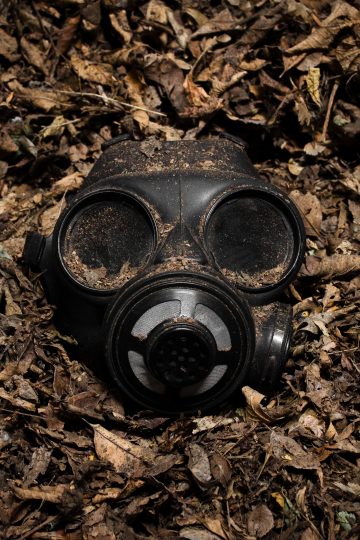Toxic! Hegemonic! Hybrid! Know your masculinity definitions
Masculinity
Masculinity definitions have been flying around - toxic, hegemonic, hybrid etc - but what do they all mean?
Over the past few years masculinity has been debated in a way that hasn’t quite been seen before. Post-MeToo, masculinity has been put under scrutiny, and been debated and often derided. Certain terms associated with it have entered the public domain in the course of these discussions, but what do they all actually mean? Here’s a break down of the key phrases:
Toxic Masculinity
Undoubtedly this is the most talked about phrase, but what is toxic masculinity? Some of the conversation on social media has been about all masculinity being toxic, while others suggest that it is just an extreme set of masculine behaviours that are toxic: certain violent, sexually aggressive/abusive, hyper-competitive, uncaring and unfeeling tendencies that are most often associated with men. That there are these extremes to male behaviour is undeniable, given the statistics on violent crimes, for instance, which are way more prevalent in men. But some people think the phrase is simply a negative one that is detrimental to any debate, somehow pathologising masculinity as a whole, as if it were a disease.
However the Oxford English Dictionary defines toxic masculinity as: “a set of attitudes and ways of behaviour stereotypically associated with or expected of men, regarded as having a negative impact on men and on society as a whole.”
And that, for the purposes of meaningful discussion around the phrase, is more useful. The idea that toxic masculinity is attitudes and behaviour that are put on men by society, which they feel they should fulfil and which can be harmful to them as much as everyone else.
The term actually originated from the mythopoetic men’s movement in the 1980’s, led by the likes of Robert Bly. In general terms, they thought that sedated modern life meant men were lacking in deep, masculine rites of passage with which to get to grips with their urges and emotions and sexuality – as a result, their withdrawn, suppressed masculinity had curdled into aggression and dysfunction, thereby becoming ‘toxic’. While their work has often been ridiculed, with the idea of men going tribal in the woods, a lot of their work has proved influential in questioning the absolutes of gender in the modern world.
In such a manner, it may also be said that toxic masculinity as a talking point over the last few years has been rightly a means for women to talk about their experiences of misogyny and abuse – and a means for conversations to start about exploring many masculinities, and seek freedom from any doctrine of what a man is supposed to be.
Masculinity
It is worth also defining masculinity alone. Quite simply it is: “qualities or attributes regarded as characteristic of men or boys.” These could be physical by nature, or behavioural or be related to assumed social roles. How much masculinity is inherent or socially influenced is very much up for debate, with no simple answer among academics.
Hegemonic masculinity
This term has been around in sociology circles since the 80s, through the work of RW Connell, and refers to the dominant mode of masculinity in any situation. Connell’s work suggested a more flexible view of masculinity whereby it can change from situation to situation – eg you can be a different man at the rugby club than you are at home with your baby. However, in whatever situation, you are living up to the ideals of masculinity in that role. Hegemony means dominance by one social group over another, so hegemonic masculinity is about how certain dominant modes of behaviour allow certain men to hold power over other men, for there is always a hierarchy working.
The theory has been revised many times over the years by Connell, including adaptations to allow for the influence of non-dominant males within this, who act as correctives to the particular masculinity in a group.
It does not refer to a patriarchy as such, but it is often used to describe masculine behaviours that dominate over others at a wider scale. By virtue of those behaviours being more prized in society and culture, it leads to, at least on the surface, an idealisation of certain type of male dominance – you traditional dominance, strength, tough, individualistic male. Which is also built on domination of women and the stigmatising of homosexuality.
Again, this is a term that has been much debated by academics, but important for everyone when thinking about the possibility of flexibility and change when it comes to masculinity.
Hybrid Masculinity
This refers to men’s selective incorporation of behaviours and attitudes that are associated with marginalised masculinities and femininities. In other words, it represents hegemonic masculinity adopting some of the more subordinate modes in society. Hybrid masculinity can occur when men want to distance themselves from hegemonic masculinity, but this can mean they are adopting or ‘performing’ other masculinities and femininities that have perceived more meaning than typical white, heterosexual behaviour. This kind of appropriation may also mean that power structures are in some way concealed and indeed reinforced. Very much an academic debating topic but which illustrates that the flexibility around dominant modes of masculinity into embracing other ways of being, may actually simply reinforce the dominant modes as they are treated as performances, as not ‘real’.
Positive Masculinity
This is not so much an academic term, more of a media term – used by The Book of Man, for instance! – which is about embracing a masculinity that is more inclusive of other sets of male behaviour that may not historically have been the most desirable traits for men, but which are excellent for men’s health (and society in general). This is not so much the adoption of other masculinities and femininities as in hybrid masculinity, rather it is about not being ashamed of expressing non-hegemonic types of masculinity and instead embracing all aspects of being a human. It is about pushing past stereotypical behaviour and showing other sides with shame, eg being caring, nurturing, empathetic, a good listener, a responsible partner, an open father. Positive masculinity is therefore a more broader approach to male behaviour and with issues like male suicide to contend with (its high prevalence in men being seen as due to men’s tendency to keep up a trad masculine front and not ask for help), its with good reason that positive masculinity is often intertwined with the phrase: healthy masculinity.

Join The Book of Man
Sign up to our daily newsletter for more from the frontline of modern masculinity


















